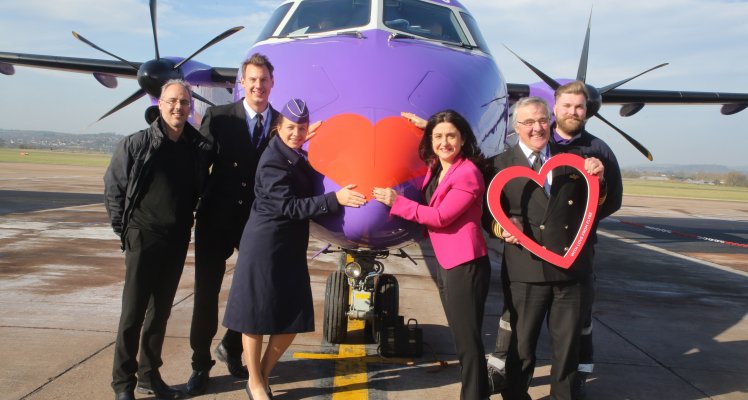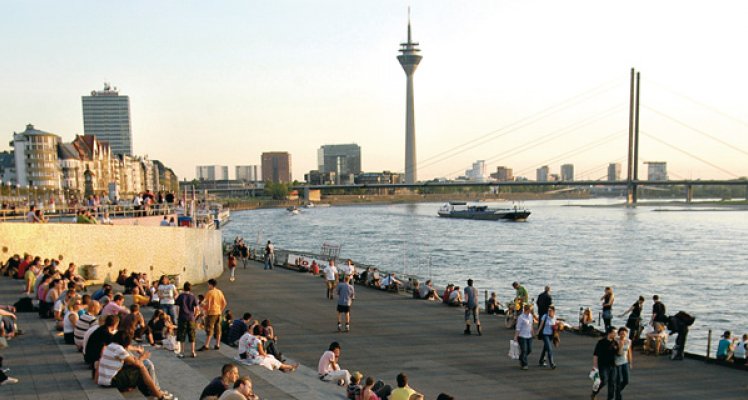One of the most frustrating aspects of air travel is a delay caused by inclement weather, in particular fog. The frustration of passengers is shared by airports, airlines and its ground handlers.
Why can’t I get away?
Although aircraft and airport technology is continually developing, one of the factors that is hardest to overcome for smaller airports is the effect of the extremes of weather: fog, snow, ice, crosswinds etc. Everyone at Guernsey and Alderney Airports suffer when delays occur. One of our stated objectives is to ‘enable the safe and expeditious movement of commercial and private aircraft, passengers and cargo to, from and at the Airport on the most cost effective and efficient basis’, and we take pride in delivering an effective service whenever it is safe to do so.
Why can’t aircraft land in fog?
In order to land the aircraft, at some stage the pilot must be able to see the runway, the runway lights, the approach lights, or a combination of all three. As an aircraft makes its approach, there comes a point at which the pilot must look for these reference points. The height at which the pilot the decision will vary according to the equipment on board the aircraft to fly the approach. Guernsey Airport’s most accurate equipment is the Category 1 Instrument Landing System (ILS), which allows the pilot to make a decision at around 200 feet above ground. If the pilot cannot see the relevent reference points, the landing must be aborted and another attempt be made. This is a standard procedure and is practiced constantly during initial and continuation training.
What about low cloud?
If there is low cloud the same principles apply. If the visibility is good but there is a cap of low cloud over the island and the pilot arrives at the decision height and sees nothing, the pilot has to break off the approach. So on some days, customers can look out of the terminal and see for several thousand metres but aircraft may still not be able to land.
Guernsey Airport has a Category 1 ILS – what does this mean?
The category of the Instrument Landing Systems (ILS) is the basis of the decision height at which the captain has to decide whether to land or go around, and the minimum visibility in which he is allowed to commence an approach. A Category 1 ILS is a basic system which is the easiest to install, maintain and work with. Category 2 and 3 ILS equipment affords greater accuracy, attracts greater protection and engineering requirements and therefore offers lower decision heights and lower approach minimum visibility. The ILS minima are set by European law. The airline companies then set their own operating procedures based on these minima. At Guernsey Airport the minimum measured ground visibility required to commence an approach is 550 metres.
Could Guernsey install an ILS with lower limits?
On numerous occasions, usually when it foggy, people have asked this question. The technical answer is that it comes down to geographical features and the obstacles around the airfield which could impact on the signals generated by the ILS equipment. Guernsey Airport is located on a small patch of land surrounded by housing and other buildings, with challenging terrain (a valley) to the East. To successfully install a more accurate ILS would require considerable adjustments to neighbouring property and infrastructure in order to support the more accurate signals. Furthermore, there would have to be further work on the airfield to ensure that aircraft operating in low visibility are afforded the required protection from each other, and prevented from interfering with the ILS signals. We would also need to install additional lighting on the runway and on our approaches. In addition, in order to remove the risk of arriving aircraft colliding with surrounding obstacles, it might prove necessary to demolish some buildings on the approach path and re-route public roads.
Is there anything better on the horizon?
There is an increasing use of augmented GPS technology for approaches, but at present Europe is taking a cautious approach on its implementation and at the moment the most advanced kind offers approach minima equivalent to that of a CAT 1 ILS. Also, not every company is fitted with the equipment to exploit the capability. You will hear discussion among operators about in-cockpit technology that offers ‘Lower than standard Category 1’ potential, such as Head Up Displays and Enhanced Vision Systems. Some aircraft already have this, many do not. These capabilities will become more widespread as companies renew their fleets.
What about departures?
If you aircraft is here and it is foggy, unless it is really foggy, you should get away. During the Rehabilitation Project, we took the opportunity to install addition runway centreline lighting and this allows commanders to take off in lower visibilities.
Why am I asked to check-in on time, and then kept waiting?
Our weather is very dynamic and if an opportunity to land arises, Guernsey Airport does its best to get the aircraft in. In that case, we want to get you on your way. It is in everyone’s interest to help us turn the aircraft around as quickly as possible.
Why must departing passengers return purchased Duty Free goods when a flight has been cancelled?
Duty free goods are controlled by customs regulations, which mean that if a passenger does not eventually depart from the country where duty free goods have been purchased they are not entitled to keep them. Furthermore, in some cases of cancellations passengers may choose to depart on a different day and as such will have to clear security again without hold luggage, where bringing large quantities of liquids are not permitted under the current restrictions.
If a flight is cancelled, why aren’t passengers automatically booked onto another flight without the need for having to rebook?
Every passenger's needs are different. For example, some may be travelling for a specific event, which as they may be forced to miss would prefer to cancel their entire journey. In addition, passengers travelling for leisure purposes may decide to rebook on a different airline at their own expense or on an alternative day. Furthermore, there are often occasions when the next available flight does not have sufficient seats to accommodate all passengers affected by a cancelled flight.
Why do some airlines compensate some passengers in times of delays and cancelled flights such as food and refreshment vouchers, while it appears some airlines do not?
Although all EU airlines are bound by a compensation scheme airlines implement the policy in different ways. Therefore, the general advice for passengers who may have concerns is to check the individual airline policy before booking.
Is a passenger entitled to financial compensation as a result of inclement weather?
This is not the case as airlines are not responsible for weather conditions.
Does a passenger receive any form of compensation as a result of a delay?
After a set period of time (which can vary from airline to airline) delayed passengers will be provided with free refreshment vouchers and if delayed even longer than at first expected could also receive food voucher tokens to be used in airport catering outlets.
If a flight has been delayed overnight or rescheduled to the following day is a passenger entitled to complimentary accommodation?
In most cases, yes. An airline will provide complimentary accommodation and return transfers to and from the airport.
Are refunds given for cancelled flights as a result of inclement weather?
Yes. A refund is normally given on all sectors of the journey that have not been used. If a passenger still wishes to travel, the airline it has responsibility of finding an alternative flight.
If a passenger chooses to cancel the outbound flight is the return sector still valid?
If this is the case the passenger must inform the airline of its intention to use the return sector only. If the outbound sector is unused and the airline has not been advised the reason for doing so the return sector is likely to be cancelled automatically.



